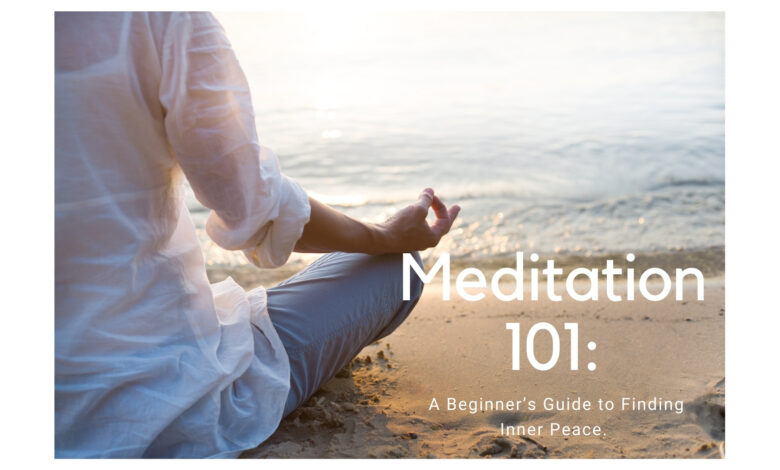
Meditation 101: How to Start a Meditation To begin your mindfulness journey, find a quiet and comfortable space where you can sit undisturbed. Close your eyes and take a few deep breaths to center yourself. Start by focusing on your breath, observing the sensations as you inhale and exhale. Allow any thoughts or distractions to come and go without judgment. Practice this daily for a few minutes and gradually increase the duration as you become more comfortable.
Do you feel overwhelmed by how much you need to get done? Does it feel like you’re constantly stressed and experiencing obliviousness? Do you notice stress in your body? If you answered yes to these questions, you have come to the right place. Awareness is a great tool to lower stress and help us find equilibrium. However, many of us find it hard to meditate due to misconceptions that this article aims to clarify. Here are five considerations when starting a meditation practice:
How to Start a Meditation Practice ;Meditation 101: Five Tips to Reduce Stress
1. Give Up the Control
A common misconception is the need to control our environment, believing that meditation is only possible in a quiet and controlled space. Frustration often arises when external noises disrupt our session, causing us to end it prematurely. For example, a practice near a train track may involve vibrations from passing trains. Instead of resisting, incorporate these sounds and vibrations into your meditation. Embracing the environment as it is can enhance your practice and teach adaptability.
2. Be Realistic
If you’re an overachiever, you might try to meditate for long periods at the start. However, beginning with extended sessions can lead to frustration, irritability, and discouragement. Start small, with sessions lasting 3 to 5 minutes, and gradually increase the duration as your tolerance grows. Choose a time that feels manageable and works for you.
3. Be in the Moment
To start meditating, follow these steps:
- Find a comfortable place to sit for a few minutes.
- Decide how long you want to meditate and set an alarm if needed.
- Slowly notice your breath, inhaling and exhaling at your own pace.
- When ready, close your eyes and focus on your breath. Avoid trying to control your body; simply notice your experience.
- Observe the present moment without expectations. Use techniques like the Body Scan to feel sensations from head to toe or “Leaves on a Stream” to release intrusive thoughts.
The goal is not to control your environment or thoughts but to observe and accept them neutrally. Let go of labeling experiences as good or bad, and allow yourself to release whatever arises.
4. Noticing the Changes
As you meditate, reflect on what you notice:
- Do you feel clarity, lightness, or renewed energy?
- Are there aches or discomfort in your body?
Your body and mind are communicating with you. Identify areas that need kindness and compassion. For example, if your hands hurt, consider what you can do to care for them today. Meditation helps us de-stress and heightens our awareness of basic needs.
5. Finish Well
As you conclude your meditation session, take a few moments to:
- Notice your surroundings.
- Feel grounded and present in your environment.
- Appreciate the time you’ve taken for self-care.
Ending your practice mindfully ensures you transition smoothly into your day while retaining the benefits of meditation.
Final Thoughts
Meditation is a powerful tool for reducing stress and improving overall well-being. By letting go of control, starting small, staying present, and noticing your body’s signals, you can build a sustainable practice that fits your life. Remember to end each session mindfully and with gratitude for the clarity and balance you’re cultivating.



